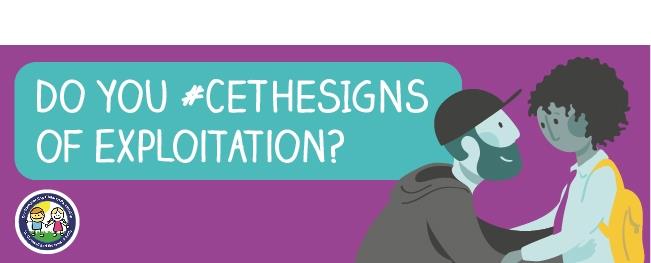Tackling Child Exploitation
If you have immediate concerns about a child, get help and advice here
Worried about an adult? Please visit the Safeguarding Adults Board website
Tackling the exploitation of children and young adults in Cornwall is a shared priority of Our Safeguarding Children Partnership, Safer Cornwall and the Safeguarding Adults Board
Follow the links below for further information on tackling the exploitation of children and young adults
Cornwall Exploitation Strategy
Missing and Child Exploitation (MACE) Concerns in Cornwall
All concerns relating to potential perpetrators of child exploitation and / or locations, venues or vehicles relating to actual/potential exploitation of children should be made via the MARU referral process. More information about MACE processes in Cornwall is available here.
Related Guidance & Further Reading
Safeguarding children at risk from criminal exploitation - 'It was hard to escape' - a national review, undertaken by the Child Safeguarding Practice Review Panel (DfE)
Online Resources
The Tackling Child Exploitation Support Programme from Research in Practice supports local areas to develop an effective strategic response to child exploitation and threats from outside the family home. View the tackling child exploitation resources here.
Research in Practice Podcast - Safeguarding Children and Young People from Exploitation
This Child Exploitation Language Guide from the Children Society provides guidance on the avoidance of victim-blaming language or any implication that a child or young person is complicit in exploitation. They also provide a toolkit for supporting parents and carers.
Barnardo's also reviewed their Language Matters guide in 2022 and 2024 in recognition of the pace of change in the field.
The NWG Network aims to inform, educate and prevent child exploitation and abuse throughout the UK. They have many resources available to support professionals available here.
- Information for parents and carers is available here
- And there is information for children and young people available here
Training
OSCP Exploitation Webinar - this session has been developed jointly by Devon & Cornwall Police and Cornwall children’s social care to help professionals identify and respond effectively to emerging signs of exploitation. The session also provides an update on developments in Cornwall’s response to exploitation. Click here to book.
OSCP Understanding the Impact of Neurodiversity, Trauma and Exploitation - this session provides a deeper understanding of the impact of trauma and exploitation for Children and Young Adults, who are neurodivergent particularly in terms of the local landscape. Specialist leads within the NWG team then provide a national overview of this subject by sharing the learning gained from practice. They focus on:
- Real life examples from NWG surgeries
- Relevant points to raise from The National Audit by Baroness Casey
- Highlighting identified Local and National challenges for practice
Free combating CSE Training is available here.
Click the image below to see our campaign page #CEtheSigns and access the shareable resources
